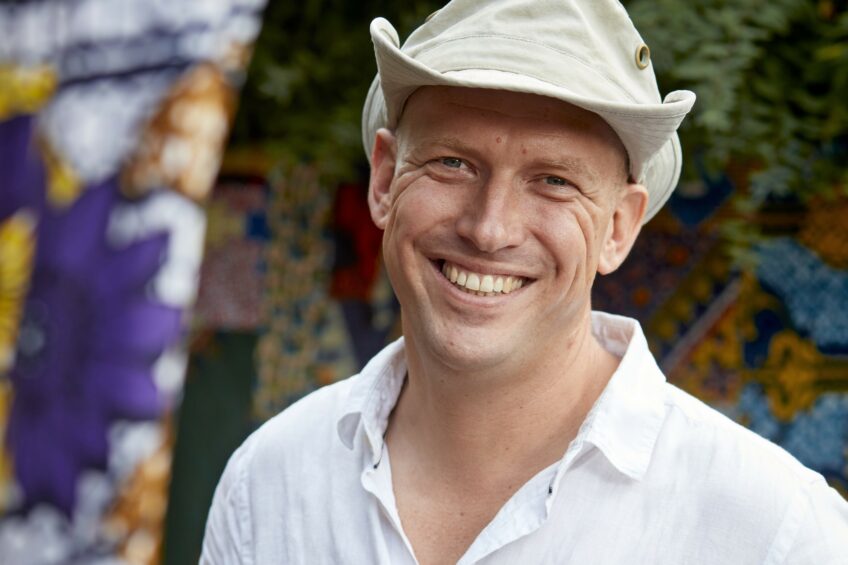‘The entire poultry production chain must benefit’

The World Poultry Foundation is building value chains with dual-purpose chickens in African countries. This provides women with an income and their families with high-quality food. To guarantee continuity, all links in the chain must benefit, explains senior programme director for Africa, Jan de Jonge.
The African Poultry Multiplication Initiative (APMI) started its operations in 2017 in Nigeria and Tanzania, which are focus countries of its financier, the Bill & Melinda Gates Foundation. Those countries were chosen because of the needs of the people and the size of the population. These are also countries with a tradition of poultry farming. Zimbabwe joined the list in 2021 and recently projects started in Gambia and Sierra Leone.
Poultry World spoke to Jan de Jonge to find out more.
Why does APMI work with dual-purpose birds?
The dual-purpose chickens do not produce as much meat as broilers and do not lay as many eggs as laying hens, but they do produce more than the native chickens kept in the African countries we operate in. The dual-purpose birds lay 130-175 eggs annually, while the local breeds 30-60 eggs per year. The chickens which are raised for meat production reach the target weight of 1.8-2.2 kgs in 13 weeks, compared to 32-36 weeks for native chicken breeds.
They are fed at the brooding unit, the rearing farm, but from 4 or 5 weeks of age the chickens forage for their own food. Dual-purpose chickens are an excellent solution for households in rural areas. We work with 4 different breeds: Noiler in Nigeria, Gambia and Sierra Leone, Sasso and Hubbard in Zimbabwe and Kuroiler and Sasso in Tanzania. The chickens with their multi-coloured feathers resemble the native chickens and so people are more likely to buy them. These breeds were created through natural selection. They are robust chickens; mortality on the rearing farm is less than 5% and the loss at local farmers is less than 10%.
‘Now we can afford to send our children to school.’
What are the results?
We have already helped 2.4 million households and 5,000 brooding units, small-scale farmers in remote rural areas. About 100 million chicks have already been delivered. Increasing egg and poultry meat production is one of APMI’s 5 goals. The 15-35 chickens we supply per household provide food for the families themselves and the project ensures a higher income in rural areas. The number of birds that farmers get is limited but the impact is enormous. Someone said: “Now I can finally afford to send my children to school.”
APMI also improves the position of women. The resistance to this may be less than one would expect; women looking after chickens is common practice in many African cultures. We also don’t exclude men; they benefit, too. The fifth goal is to measure the project’s impact and continuously improve. We are an NGO but we operate like a business. We want the farmers to be successful and the chickens to flourish. We measure this and tailor our approach to the individual poultry farmers. To continue to function in the long term, everyone in the value chain must benefit from it. If that is not the case, the chain will collapse.
How is that chain structured?
We work together with local partners. In order to ensure a properly functioning supply chain and high-quality products, we prefer to work with companies from the poultry sector with expertise in incubation and rearing, as well as feed production. They must be familiar with the local culture and have a good relationship with the local and national governments. Moreover, they must be able to co-finance.
The partner companies are financed provided they meet certain progress criteria. That financing decreases over the years. Then they have to make a profit for themselves by selling day-old chicks or feed for the rearing companies. We still keep in close contact afterwards but in a more advisory role.
The Field Service Representatives, as they are known, of these partners, in turn, select suitable women for the brooding units. They organise meetings in the village communities for this purpose and we support them with training and checklists. The Field Service Representatives visit the rearing farms every week to check. Do the chickens have enough space? Do they have access to water and feed? They also approach women to see if they would like to keep chickens on a small scale.
What have you learned in recent years and have you gradually changed course?
In 2017 we focused mainly on scale: we wanted to operate large and fast. However, this puts pressure on the supply chain and makes it more difficult to track results in rural areas. That is why we now focus more on one region within a country and then we will expand to other regions.
The scale was initially too big on the rearing farms. Starting immediately with 2,000 day-old chicks turned out to be too much, because you also have to sell the chicks. We also pay more attention to the training of poultry farmers. The partner companies were already doing that and we had a manual for the brooding units, but we fell short in training the farmers. We have created information material for them with few words and many pictures to convey basic knowledge on themes such as housing, feed, water and animal health.
A new version of the Feedmixer app can be downloaded from app stores which allows farmers to use the raw materials available to them to formulate feed with the correct protein content and sufficient micronutrients for the breed and age of their poultry. The nice thing about it is that even developed world poultry farmers can benefit from this, too, now that animal feed is so expensive.













